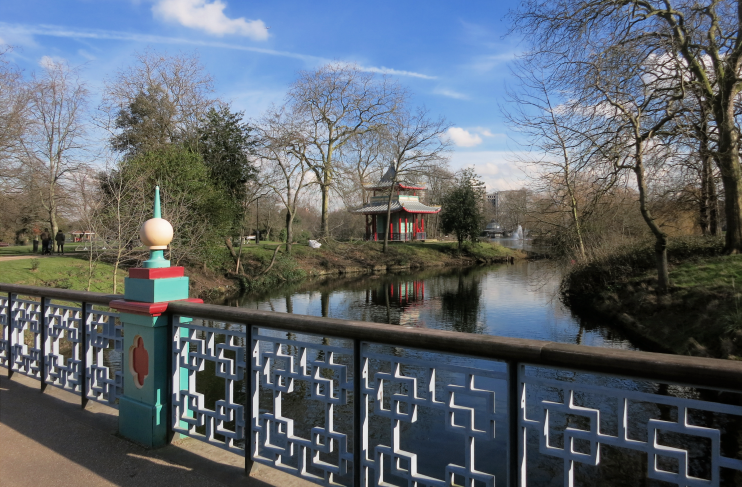Victoria Park
Victoria Park, Tower Hamlets/Hackney
A 213-acre, boot-shaped park with lakes and amenities, situated between South Hackney and Bow’s Old Ford locality

Victoria Park was created to beautify the East End, provide recreational space and improve public health. Two possible sites were considered: at Bow Common and in south-east Hackney. The consultant planner Sir James Pennethorne recommended Bow Common, which he felt was less flat and dull. However, the Hackney option was preferred, primarily because the land was cheaper, although landscaping proved unexpectedly expensive.
There were nurseries and orchards here before, but the fruit trees were cut down for fear that they would provide an incentive to thieving and disorder. Disorderly gatherings had been a feature of the neighbouring Bonner’s Fields, most of which subsequently disappeared beneath access roads and housing.

Victoria Park opened unofficially in 1845, while landscaping was still in progress and before the lakes had been created. Numerous ornamental structures were added in subsequent decades but most have been lost as a result of war-time bombing or neglect. Among the notable survivors are a pair of stone alcoves from Old London Bridge and Baroness Burdett Coutts’s ridiculously grand drinking fountain, shown on the right.
The creation of the park stimulated housebuilding in its vicinity. New streets were laid out and substantial terraced houses and detached villas filled the area over the following three decades. Victoria Park had a station on the North London line from 1856 to 1943, with access from the north side of Wick Road. Some housing was replaced after the 1960s by private and council flats but a conservation area now protects most of the Victorian properties, which have been described as ‘forever up-and-coming but never quite making it into the Islington league’. Estate agents refer to the area as ‘Victoria Park village’.
In 1994 Victoria Park became the sole responsibility of the London Borough of Tower Hamlets, which completed a major programme of improvements in 2012. The £12 million works included a playground, a Chinese pagoda (shown in the photograph at the top*) and new flower displays.
The park has hosted political gatherings throughout its history, including Chartist rallies soon after it opened, striking dockworkers’ meetings in the late 19th century and a Rock against Racism carnival in 1978 that was attended by more than 80,000 people (including this author). Nowadays its events tend to be more commercial, with music festivals generating around £100,000 a year for the council.
Postal districts: E9, E3 and E2
Population: 13,231 (Hackney’s Victoria ward, 2011 census)
Further reading: Philip Mernick and Doreen Kendall, A Pictorial History of Victoria Park, East London History Society, 1996
Websites: Victoria Park, Victoria Park Village
